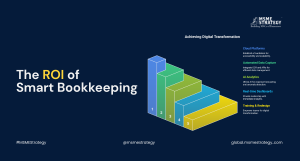In today’s AI-driven business landscape, small and medium-sized enterprises (SMEs) across the UK, Europe, and the USA are increasingly turning to intelligent automation to optimize their finance operations. With the right tools, what used to be manual, repetitive, and time-consuming—like invoice processing, expense tracking, or payroll—can now be done in a fraction of the time, with greater accuracy and less human intervention.
Unlike large corporations with in-house finance teams and ERP systems, SMEs often operate with leaner resources. That’s why the adoption of AI-powered finance tools is leveling the playing field—empowering small businesses to work smarter, not harder.
Whether it’s using machine learning to detect anomalies in transactions or robotic process automation (RPA) to handle reconciliations, SMEs worldwide are integrating automation into their financial workflows to free up time, improve accuracy, and scale with confidence.
Here are 7 practical ways your business can start leveraging smart finance automation—right now.
1. Automate Invoicing and Payments
Manual invoicing can delay cash flow and increase the risk of human error. Tools like Xero, QuickBooks, or Zoho Books allow you to automate recurring invoices, set payment reminders, and sync with your bank for seamless reconciliation.
Global Tip: Choose tools that support multi-currency transactions to easily manage global clients and suppliers.
2. Use AI for Expense Management
Tired of tracking paper receipts or spreadsheets? Smart tools like Expensify, Rydoo, or Pleo use AI to categorize expenses, capture receipts via mobile, and integrate directly with accounting software.
This not only speeds up approvals but also gives real-time control over spending.
3. Implement Automated Payroll Systems
Payroll mistakes can lead to compliance issues and unhappy teams. Platforms like Gusto (USA), BrightPay (UK), or PayFit (EU) streamline the entire payroll process—from tax calculations to payslip generation—while staying compliant with local regulations.
4. Streamline Tax Compliance and Reporting
Tax laws vary widely across jurisdictions. Tools like Avalara, TaxJar, or Sage can help SMEs automatically calculate taxes, file returns, and generate reports tailored to country-specific laws.
Automation reduces the risk of penalties while giving you peace of mind.
5. Integrate Banking and Accounting
Many banks now allow real-time API integrations with accounting platforms. This means transactions are automatically synced, categorized, and matched—saving hours of manual bookkeeping.
Look for open banking integrations in your region to supercharge accuracy.
6. Adopt Cash Flow Forecasting Tools
Knowing your future cash position is critical. Software like Float or Pulse uses historical data and invoice status to project future cash flow, helping you plan investments, manage credit, and avoid shortfalls.
Forecasting becomes dynamic, not static.
7. Leverage RPA (Robotic Process Automation) for Repetitive Tasks
For more advanced finance teams, RPA tools like UiPath or Automation Anywhere can automate repetitive tasks like data entry, reconciliation, or vendor onboarding.
These tools reduce workload and free your finance team for strategic analysis.
Why SMEs Should Act Now
Whether you’re scaling internationally or aiming for better internal controls, finance automation is your competitive edge. It boosts accuracy, enhances decision-making, and reduces operational bottlenecks.
With the right tools and guidance, even small teams can operate with the agility and precision of large enterprises.
Need Help Getting Started?
At MSME Strategy Consultants, our experienced consultants are ready to help your business adopt smart finance automation and scale with confidence.
#GlobalMSMEStrategy #FinanceAutomation #DigitalTransformation #SMEGrowth #SmartFinance #BusinessEfficiency #SMEs






